- Influencial pioneers
- Influenial pioneers
- Influencial pioneers
- Influencial pioneers
- Influencial pioneers
- Influencial pioneers
- Influencial pioneers
- Influencial pioneers
- Influencial pioneers
| Temple Square is always beautiful in the springtime. Gardeners work to prepare the ground for General Conference. © 2012 Intellectual Reserve, Inc. All rights reserved. | 1 / 2 |
This story appears here courtesy of TheChurchNews.com. It is not for use by other media.
By Eliza Smith-Driggs, Church News
While Brigham Young, Eliza R. Snow, Heber C. Kimball and other early pioneers are household names, the conversion stories of other pioneers are lesser-know but span decades and the globe. The Church News compiled a list of 10 representative stories, using the Church’s Global Histories and other sources.
1. Mischa Markow: One of the First Eastern European Saints
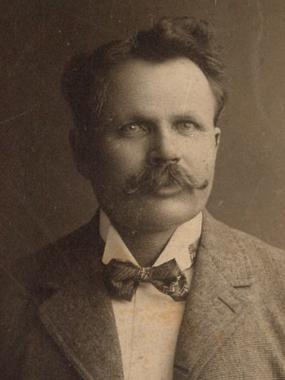
Influencial pioneers
Photograph of Mischa Markow, circa 1903.2020 by Intellectual Reserve, Inc. All rights reserved.Within 15 years of his conversion (one of the first Eastern European converts), Mischa Markow served two missions for the Church in countries represented today as Belgium, Bulgaria, Croatia, Germany, Hungary, Latvia, Romania, Russia, Serbia and Turkey.
His preaching and baptizing laid the foundation for several branches that had grown to nearly 350 congregations with over 80,000 members by the early 21st century, according to Newsroom.
Raised in Eastern Orthodox Christianity by a Serbian father and Romanian mother, Markow felt the need to find the true church of Jesus Christ. He set out on a ship bound for Constantinople to investigate several Protestant churches.
On the ship, he met Jacob Spori, the first Latter-day Saint missionary to proselyte in the Ottoman Empire. As Spori started teaching Markow the gospel, he seemed like an angel to Markow. Missionaries baptized Markow in the Black Sea in 1887.
After preaching in Belgium, he emigrated to Utah. Almost 10 years later, Markow returned to Eastern Europe as an official missionary. This was the first of two missions he would serve in Eastern Europe.
Despite fervent efforts to preach, Markow was banished from Bulgaria, Hungary, Romania and Serbia. He found success, however, in present-day Timişoara, Romania, and Riga, Latvia. He returned to Utah in 1905, where he worked as a barber until his death in 1934.
2. Martha Hughes Cannon: First Female U.S. State Senator
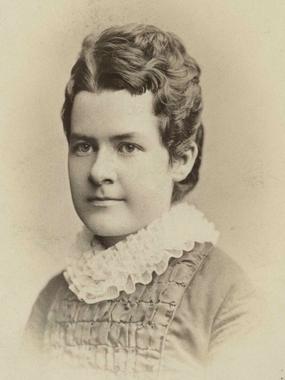
Influenial pioneers
Dr. Martha Maria Hughes Cannon, photo courtesy of the Church History Pioneer Database.2020Born in Wales in 1857, Dr. Martha Maria Hughes Cannon emigrated to Utah with her parents and two siblings. At age 16, she enrolled at the University of Deseret (present-day University of Utah). There, she received a bachelor’s degree in chemistry, and at the University of Michigan received a master’s degree.
A polygamous wife and Utah women’s rights activist, Cannon worked as a doctor at Deseret Hospital. In 1896, Utahns elected her as the first female state senator in the United States. Among the other candidates on the ballot was her husband, Angus M. Cannon. She authored Utah sanitation laws and was a founder and member of Utah’s first state board of health.
3. Jonathon Napela: Hawaiian Translator, Creator of Missionary Training Center Idea
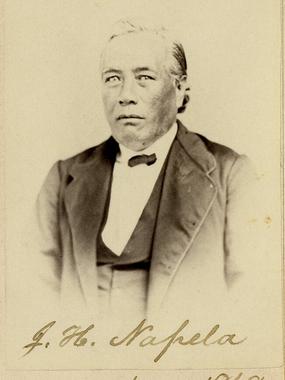
Influencial pioneers
A photo of Jonathon H. Napela, who is featured in the new “Saints, Volume 2,” released February 12, 2020. Photo courtesy of the Church History Library.2020 by Intellectual Reserve, Inc. All rights reserved.Readers of “Saints, The Story of The Church of Jesus Christ of Latter-day Saints” will recognize Jonathon Napela’s name from the account of his friendship with George Q. Cannon, one of the first Latter-day Saint missionaries on the Hawaiian islands.
After tutoring Cannon in the Hawaiian language, Napela and Cannon worked together to translate the Book of Mormon into Hawaiian — the first translation of the book into a non-European language.
Napela also proposed the first plan for a program to train missionaries in the language of their assigned field, in a school where missionaries would spend two months studying the language before dispersing to fulfill their assignments. Sound familiar? Today, 10 missionary training centers around the world do that very thing.
In 1869, after almost 10 years of trying, Napela finally visited a Utah temple, becoming the first Hawaiian Latter-day Saint to receive temple ordinances and perform proxy ordinances for deceased ancestors.
Shortly after returning to Hawaii, his wife, Kitty, contracted leprosy. Napela decided to join Kitty in Molokai, a government-established leprosy settlement. Even after contracting leprosy himself, Napela presided over a Latter-day Saint branch in Molokai until his death in 1879. Kitty died two weeks later.
By the time of their deaths, roughly 1 in 10 native Hawaiians were members of the Church.
4. Elder Helvécio Martins: First Black General Authority
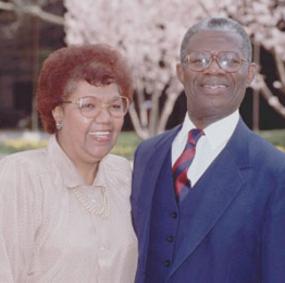
Influencial pioneers
Elder Helvecio Martins, with his wife, Ruda, are pictured in Salt Lake City in 1990. Photo is a Deseret Morning News file photo, courtesy of Church News.Copyright 2020 Deseret News Publishing Company.While living in Rio de Janeiro, Brazil, Elder Helvécio Martins and his wife, Ruda, felt a “spiritual longing” for something that would bring relief, satisfaction and joy. When Latter-day Saint missionaries knocked on their door in 1972, the Martinses asked them, “How does your religion treat Blacks?”
The missionaries asked to pray with them first, then they explained the Church’s teachings on priesthood and the temple. “The missionaries’ explanations seemed clear to me,” Martins said later. The couple soon entered the waters of baptism.
In 1978, when the First Presidency extended temple blessings to all worthy members, regardless of race, the Martinses wept in gratitude to God. They were soon sealed in the São Paulo Brazil Temple. Elder Martins became the first Black General Authority on March 31, 1990.
5. Carmen Galvez O’Donnal: Guatemalan Pioneer, Impacted Church as a Whole
As Carmen Galvez and her friends played tennis together one evening in 1942, her friend said, “Hey, Carmen, come here. This gringo wants to meet you.” The friend was referring to John F. O’Donnal, a young American who worked in Guatemala.
“Why in the world does a woman have to go to the man?” she tersely replied in Spanish, thinking O’Donnal wouldn’t understand. “If he’s a gentleman,” she said, “he can come and meet me.”
O’Donnal surprised her by walking across the room and replying in perfect Spanish, “Where in the world have you been?”
They started dating soon after. Carmen’s family and friends did not approve of John as a Latter-day Saint, but she and John married anyway on June 19, 1943.
John worked tirelessly to bring the Church to Guatemala. Carmen wanted to understand her husband’s dedication to the Church, but when she prayed about the Book of Mormon, a “dark presence” surrounded her.
Missionaries gave her a priesthood blessing that calmed her fears; she knew she needed to be baptized. After her baptism on November 13, 1948, she was called as Relief Society president in Guatemala City.
That was only the beginning of the O’Donnales’ dedicated Church service.
In 1976, John and Carmen O’Donnal presided over the Guatemala City Mission and after that, the Guatemala Quetzaltenango Mission. John also helped the Church acquire land for the Guatemala City Guatemala Temple. He and Carmen served as the temple’s first president and matron after its 1984 dedication.
Carmen and John developed programs that later impacted the Church worldwide: they proposed a consolidated, three-hour Sunday meeting schedule; developed simplified Sunday School lessons for new members (now called Gospel Principles); and oversaw the construction of small, less expensive local meetinghouses.
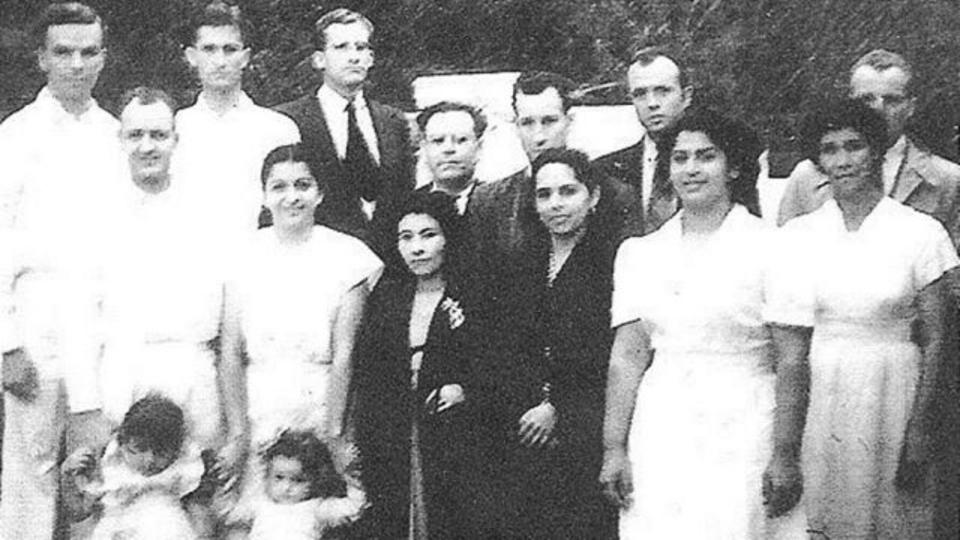
Influencial pioneers
Carmen de O’Donnal's baptism on November 13, 1948.2020 by Intellectual Reserve, Inc. All rights reserved.6. Nowah Afangbedji: Pioneer Missionary From Togo, West Africa
When, as a 14-year-old, Nowah Afangbedji heard about the Prophet Joseph Smith in the early 1990s, he was shocked someone his own age could “be so strong and confident and go to the Lord and ask Him.”
After Afangbedji followed Joseph’s example and prayed in faith about the Church of Jesus Christ, he and 13 new converts were baptized in September 1997.
“That was marvelous,” he said of his baptism. “The feelings I got, the washing power I felt, and the Spirit of the Lord that went through my soul, and the whole congregation — the joy that we had that day was special, quite special.”
In 2009, just two weeks after returning from his full-time mission to Nigeria, Afangbedji watched as the Church created the first district in his country, Togo, in West Africa. Four years later, it became a stake.
“Now I can realize that those little things we were doing then were a strong foundation for the great work that we are enjoying now,” he said.
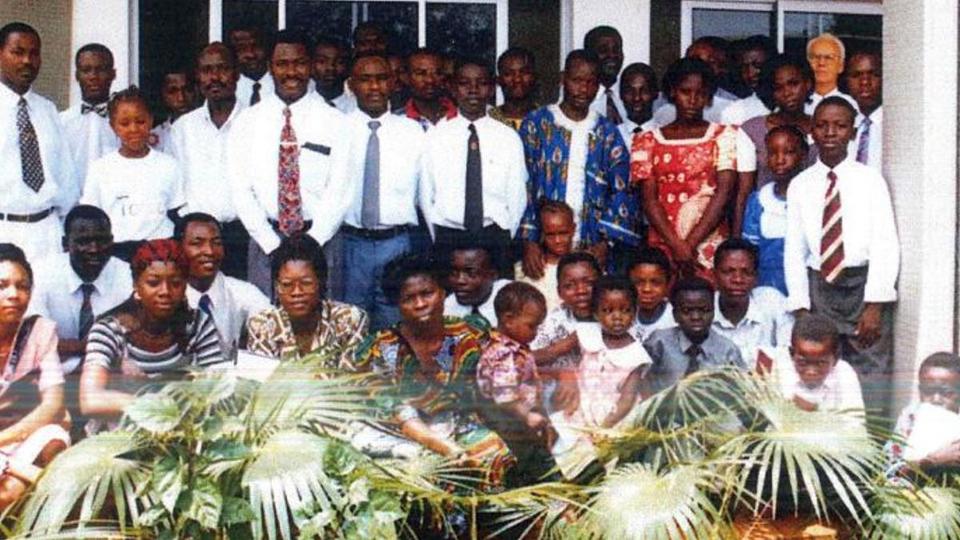
Influencial pioneers
First branch meeting in Togo, West Africa, in 1999.2020 by Intellectual Reserve, Inc. All rights reserved.7. Maxine Tate Grimm: Instrumental in Establishing the Church in the Philippines
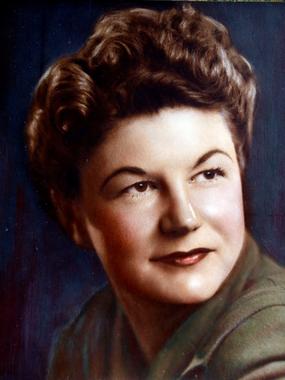
Influencial pioneers
Photo of Maxine T. Grimm when she was young, copied Tuesday, August 6, 2013. Photo courtesy of Maxine T. Grimm, courtesy of Church News.All rights reserved.During World War II, Maxine Tate, originally from Tooele, Utah, joined the Red Cross to fulfill her “greatest desires to do good for people.” While stationed in the Philippines, she gathered fellow Latter-day Saints on Sundays to worship together.
At the time, the Church had no legal recognition or local congregations in the Philippines, but she resolved to help change that. She married Pete Grimm and settled in Manila in the late 1950s, unofficially organizing Sunday School and Primary classes.
“She did all she could to teach the gospel to others,” then-Elder Gordon B. Hinckley said of Grimm. “She pleaded that missionaries be sent.”
The Church heard her pleas: the first missionaries in the Philippines arrived on June 5, 1961.
Filipinos rapidly embraced the gospel message as Grimm and her husband supported the missionary efforts. Many of the first 2,000 baptisms took place in their swimming pool. By the end of Grimm’s life, Church membership in the Philippines had reached over 700,000.
8. Elder Ángel Abrea: First Argentine General Authority Seventy
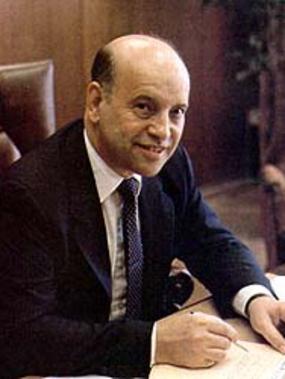
Influencial pioneers
Elder Ángel Abrea in his office. He has served as a member of the First Quorum of the Seventy since April 4, 1981. Photo by Marty Mayo, courtesy of Church News.All rights reserved.One day in Argentina, while delivering milk to a customer, 10-year-old Ángel Abrea sang his new favorite song: “Jesus Wants Me for a Sunbeam.” When his customer asked about the song, Abrea said it was from his church.
“Why don’t you tell me something about your church?” she asked. His answer prompted her and her family to attend meetings.
Abrea became a counselor in the district presidency at age 17. On March 20, 1981, Elder Ángel Abrea became the first native Argentine sustained as a General Authority Seventy.
9. Lydie Zebo Bahie: One of the First Sister Missionaries in the Democratic Republic of the Congo
After both of Lydie Zebo Bahie’s parents died while she was still young, a family member introduced her to the Church of Jesus Christ.
“When I went to church for the first time, the sisters of the Relief Society and the Young Women welcomed me so warmly,” Bahie said. “I felt I had almost found my parents again.”
Originally from Côte d’Ivoire, a country in West Africa, Bahie became one of the first sister missionaries to serve in the Democratic Republic of the Congo Kinshasa Mission. “The experiences I had, both positive and negative, helped me develop a greater Christian capacity for love and service,” she said. “My joy felt complete.”
10. Ana Cumandá Rivera: God’s ‘Instrument of Progress’
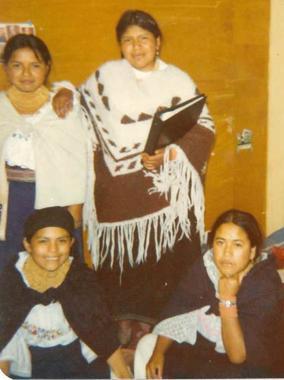
Influencial pioneers
Ana Cumandá Rivera and other sister missionaries serving in Otavalo.2020 by Intellectual Reserve, Inc. All rights reserved.In 1977, Ana Cumandá Rivera, from Quito, Ecuador, was called to serve a mission in the Otavalo area of Ecuador. She saw the Old Testament prophecy fulfilled that even the young would dream and prophesy (Joel 2:28–29).
One of her companions dreamed of going “to a community called Punyaro because there are a lot of people waiting for us,” she said. Sure enough, there, they found three families who embraced the gospel.
Another companion asked Cumandá to teach her to read and write. After seeing her progress, Cumandá yearned to do more. When her mission was over, she prayed to be an “instrument of progress” for God’s children. The Church soon asked her to return to Otavalo — this time as a literacy coordinator.
Additional Stories
- In this video, Julia Mavimbela discusses her experiences with the difficulties of being a Black woman in South Africa during the apartheid era. She explains how she found peace.
- In March 1897, President Wilford Woodruff, the Church’s fourth president, bore his testimony into a “talking machine.” Listen to his own voice as he testifies about the Restoration in this video.
- This touching video chronicles the 3,000-kilometer (1,864-mile) journey of one group of Brazilian Latter-day Saints who traveled to attend the São Paulo Brazil Temple in 1992.
- In June 1989, Ghana’s government banned Church meetings. This video highlights the members’ experiences meeting in their own homes for sacrament meeting.
Copyright 2020 Deseret News Publishing Company